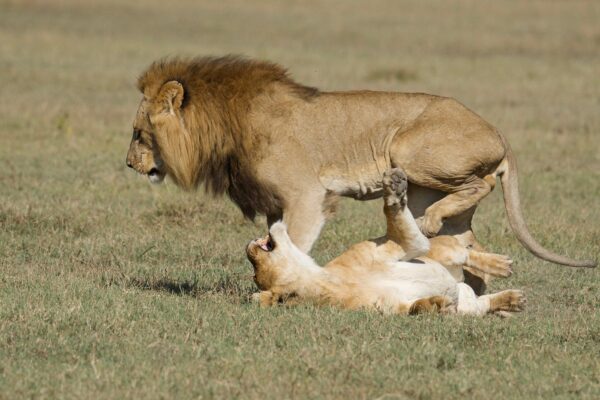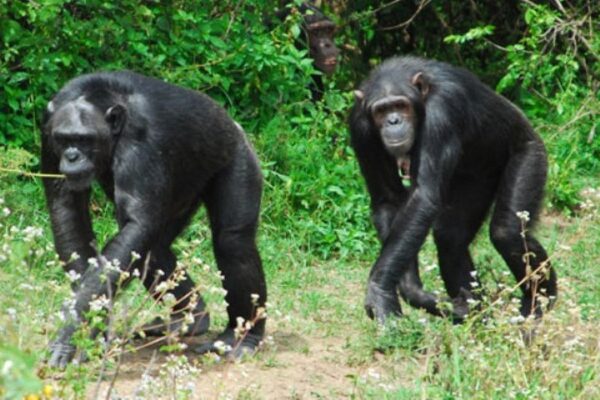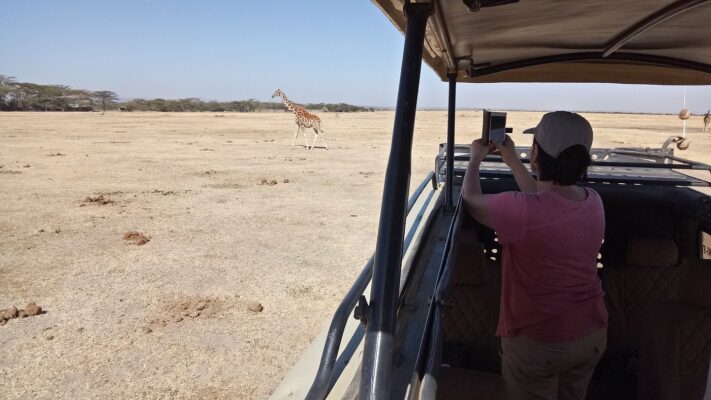Top 11 Attractions In Olpejeta Conservancy Attractions
- Big Five Wildlife
Ol Pejeta is home to the Big Five: lions, leopards, elephants, buffaloes, and rhinos. These iconic animals are a major draw for visitors, providing thrilling wildlife viewing opportunities in their natural habitats.
- Rhino Sanctuary
- Black Rhinos: Ol Pejeta has the largest black rhino sanctuary in East Africa, with over 100 individuals. This population represents a significant portion of Kenya’s black rhino population.
- Northern White Rhinos: The conservancy is also the last place on Earth where you can see the two remaining northern white rhinos, Najin and Fatu. Conservation efforts here are focused on breeding programs to try and save the subspecies from extinction.
- Sweetwaters Chimpanzee Sanctuary
The Sweetwaters Chimpanzee Sanctuary is the only place in Kenya where you can see chimpanzees. The sanctuary provides lifelong refuge to orphaned and abused chimpanzees from West and Central Africa, offering a unique opportunity to observe these primates up close in a semi-wild environment.
- Endangered Species Enclosure
Apart from rhinos, Ol Pejeta is committed to protecting other endangered species, such as the Grevy’s zebra and Jackson’s hartebeest. The conservancy’s efforts help maintain and grow these populations through dedicated conservation programs.
- Lion Tracking
Visitors can participate in the conservancy’s lion tracking program, which involves helping researchers monitor the lion population. This interactive experience allows guests to learn about lion behavior, ecology, and the challenges of conservation.
- Guided Bush Walks and Cycling Safaris
- Bush Walks: Explore the conservancy on foot with expert guides who provide insights into the flora, fauna, and the intricate ecosystems that make up Ol Pejeta.
- Cycling Safaris: For a more active adventure, cycling safaris offer a unique way to experience the landscape and wildlife. Cycling through the conservancy allows for close encounters with nature in a sustainable way.
- Night Game Drives
Night game drives offer a different perspective on the wildlife of Ol Pejeta, allowing visitors to see nocturnal animals in action. With experienced guides and equipped vehicles, these safaris provide thrilling experiences after sunset.
- Cultural Visits
OlPejeta’s proximity to local communities offers visitors the chance to engage with indigenous cultures. Cultural visits include tours of local villages, learning about traditional practices, and understanding the conservancy’s role in supporting community development.
- Educational and Research Programs
The conservancy hosts numerous educational and research programs. These initiatives provide valuable learning experiences for students, researchers, and conservation enthusiasts, covering topics from wildlife ecology to sustainable farming practices.
- OlPejeta House
The OlPejeta House, once the ranch house of renowned multi-millionaire Adnan Khashoggi, offers a glimpse into the region’s colonial history. Now a luxury accommodation, it provides guests with a unique blend of historical charm and modern comfort amidst the stunning landscape of OlPejeta.
- Equator Line Experience
Visitors can experience standing on the equator, which runs through the conservancy.

This geographical feature offers a unique educational experience, where visitors can witness demonstrations of the Coriolis effect and take memorable photos.






